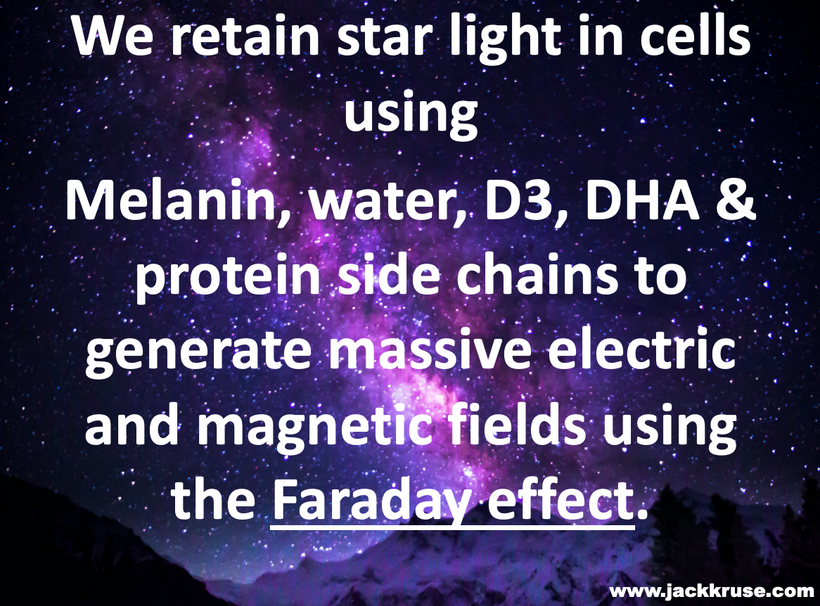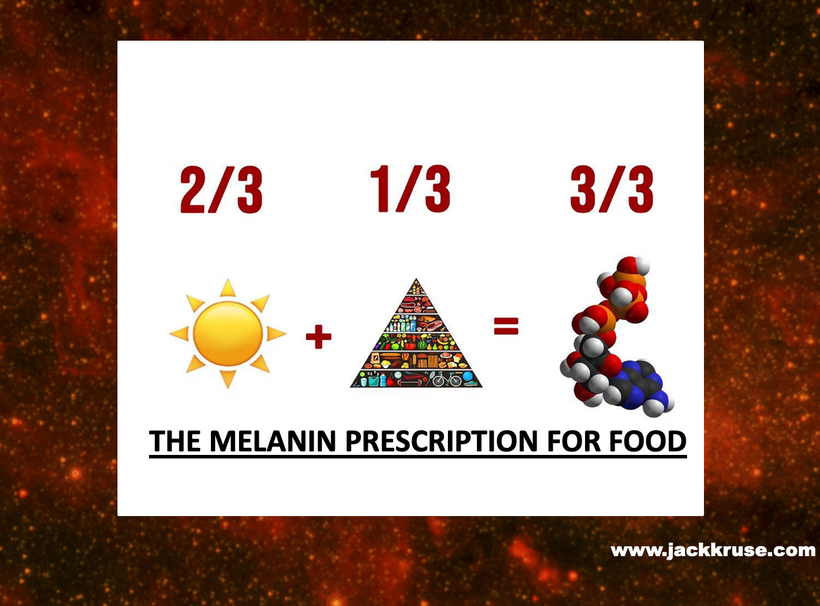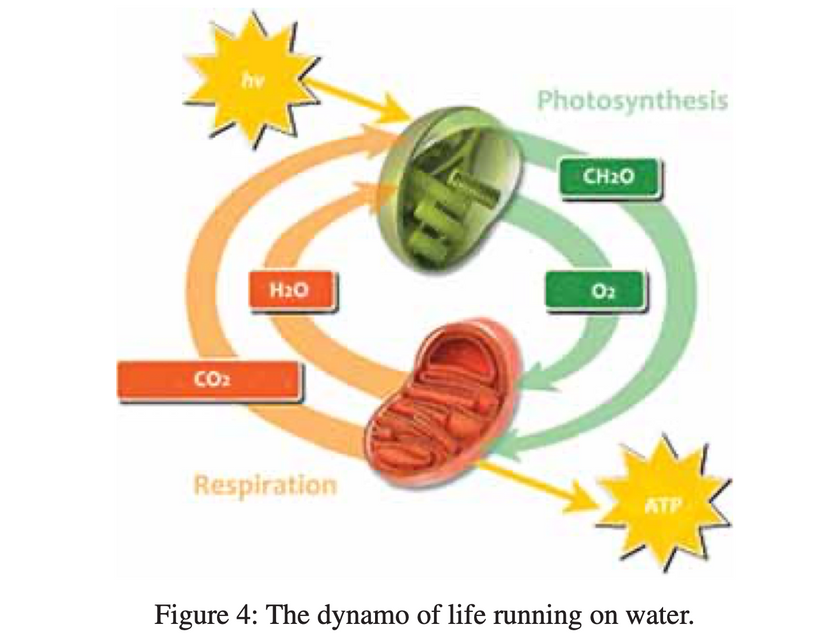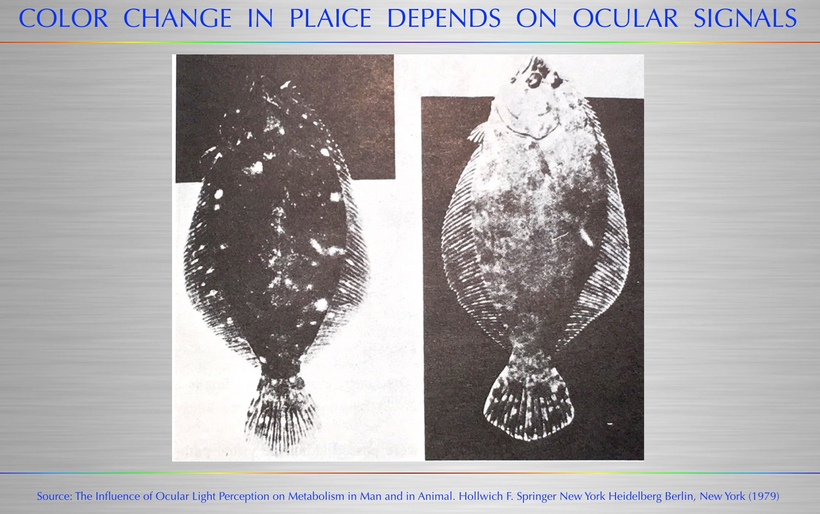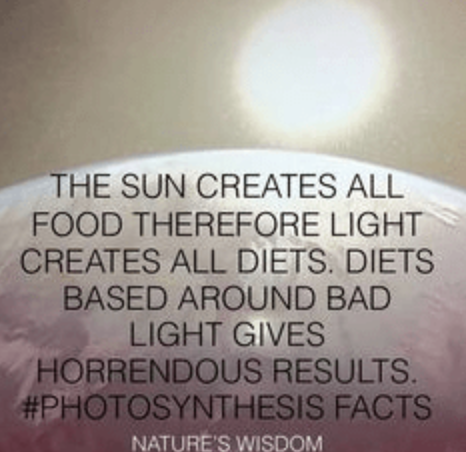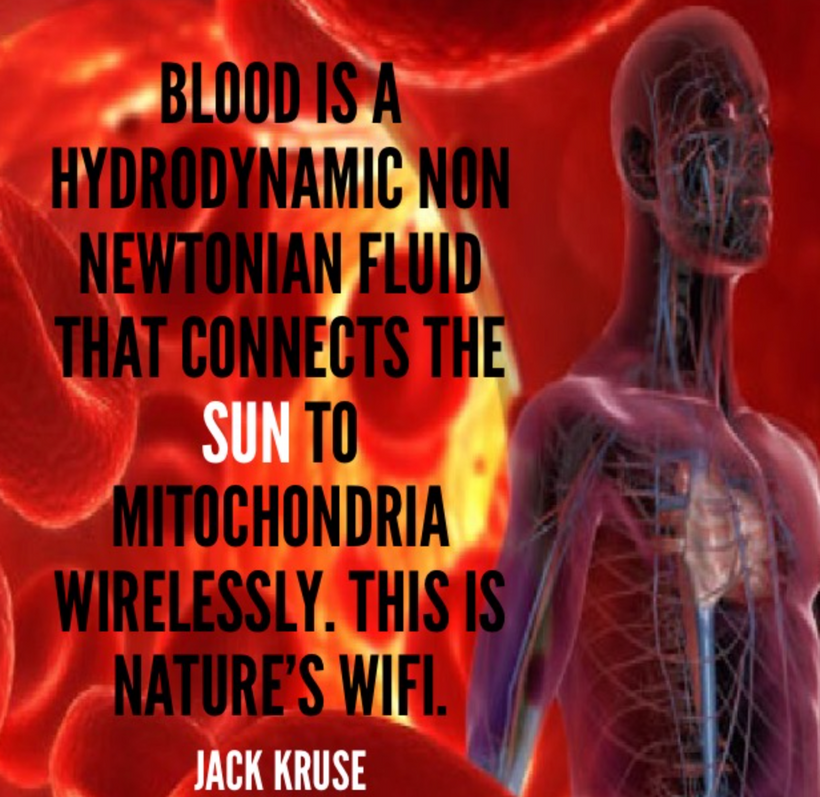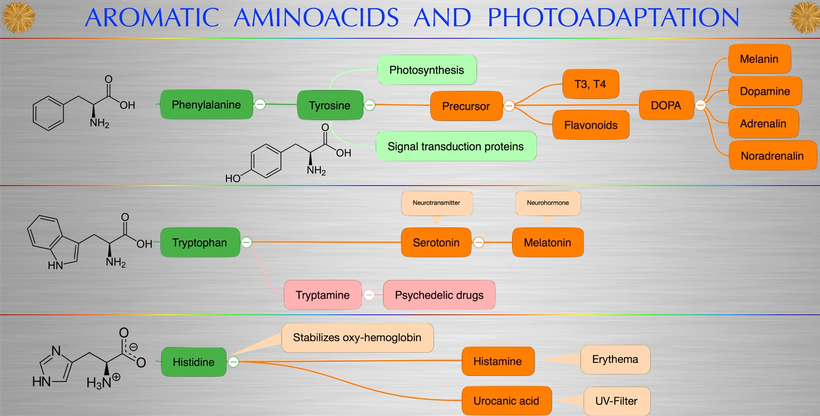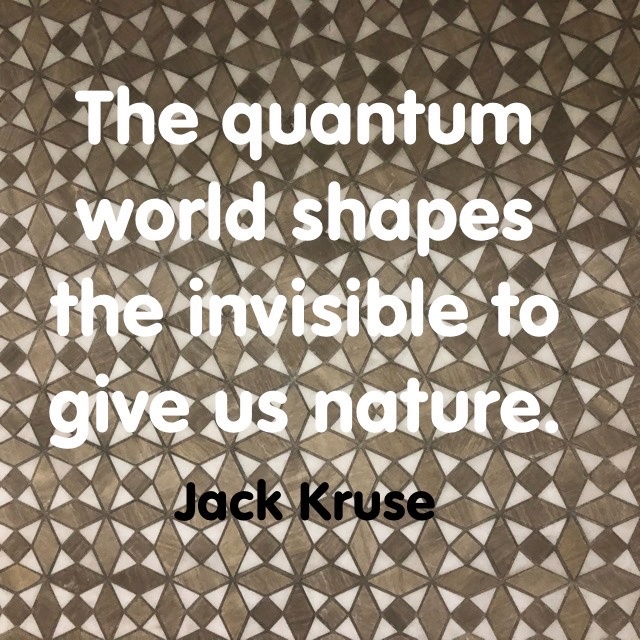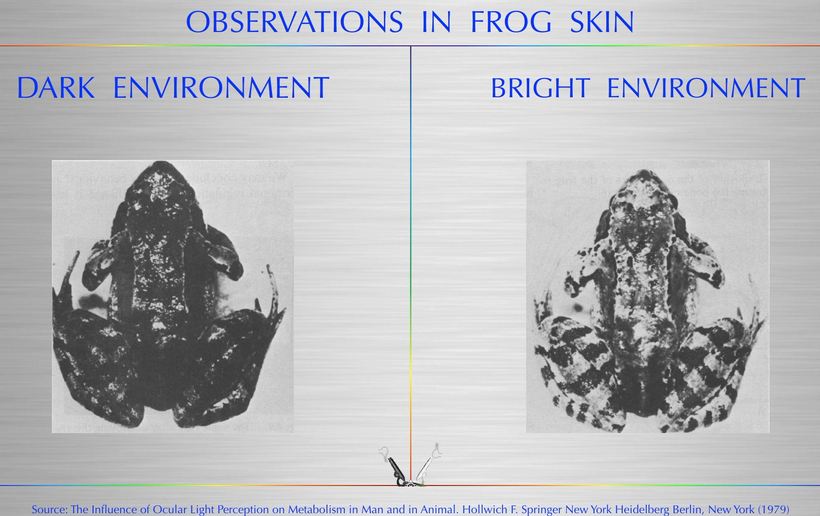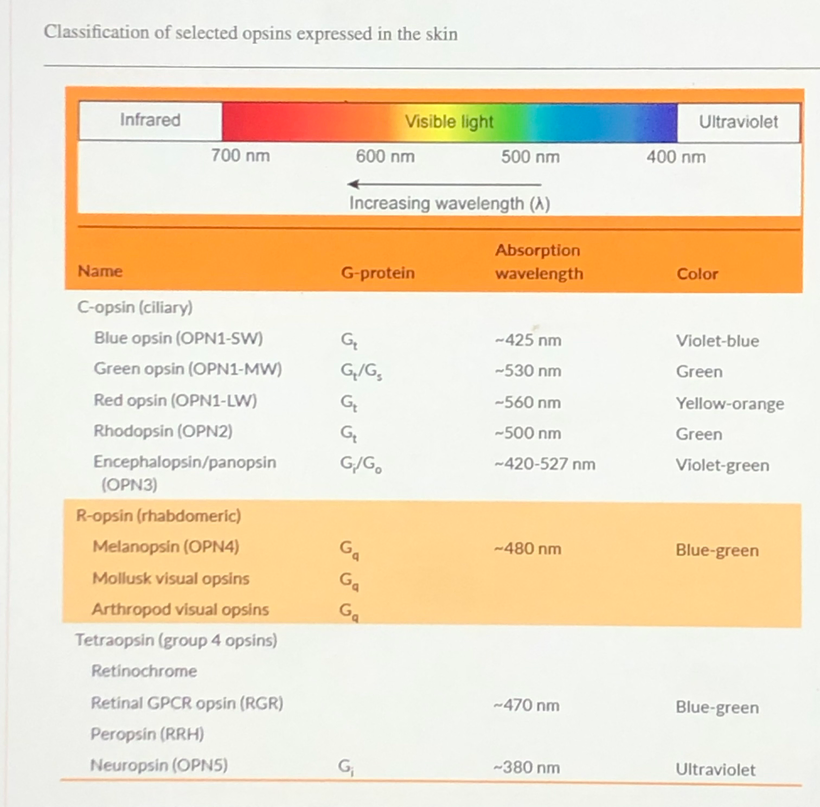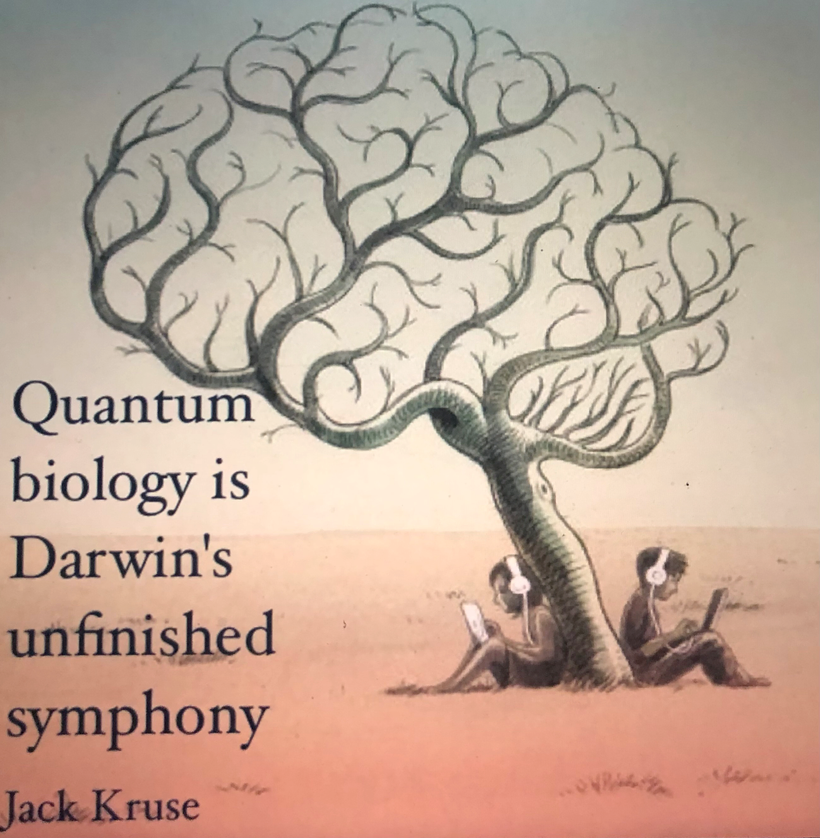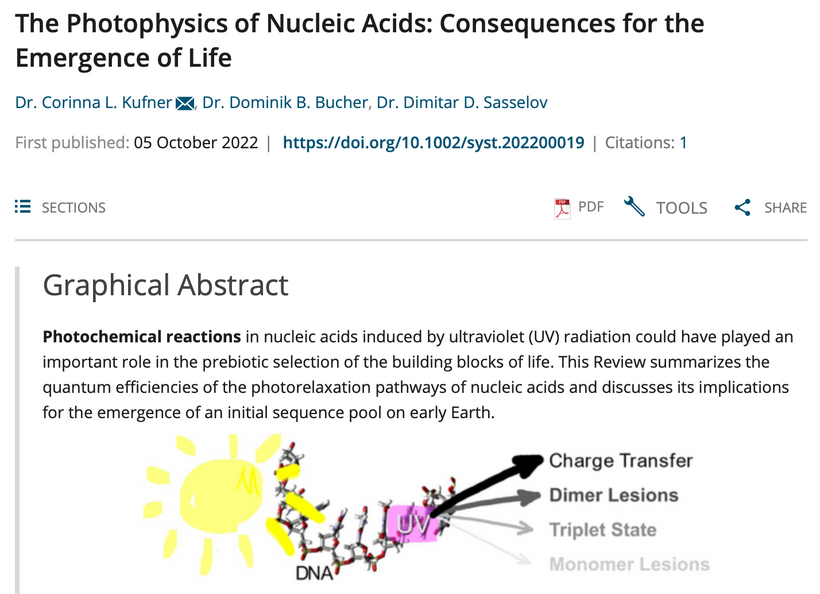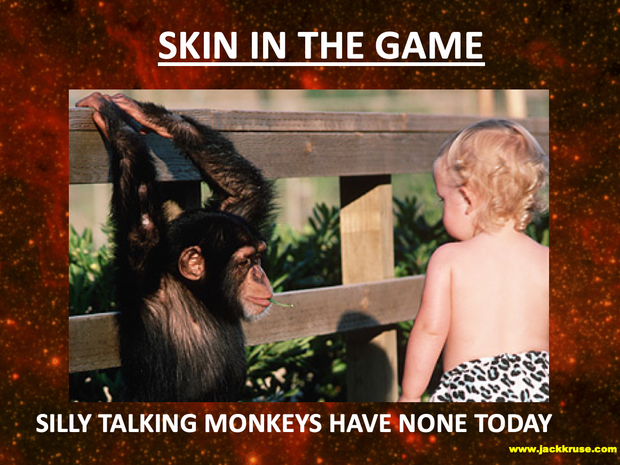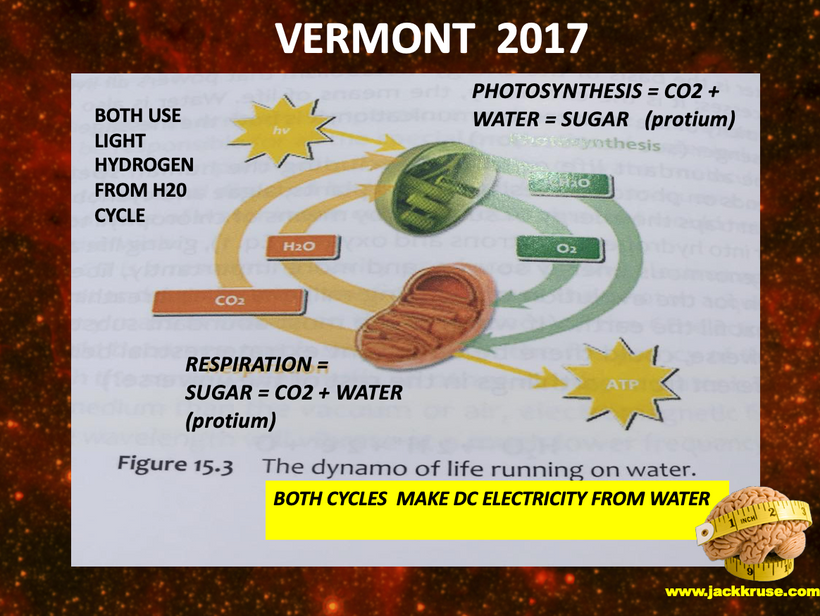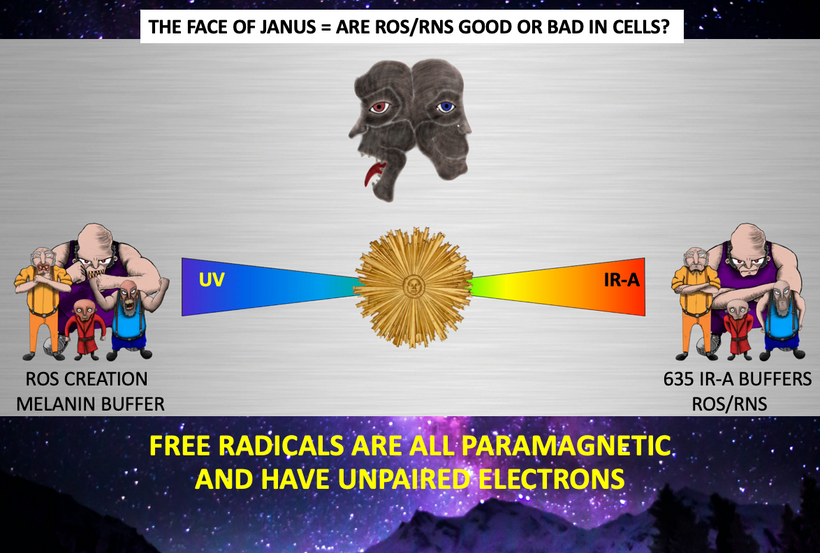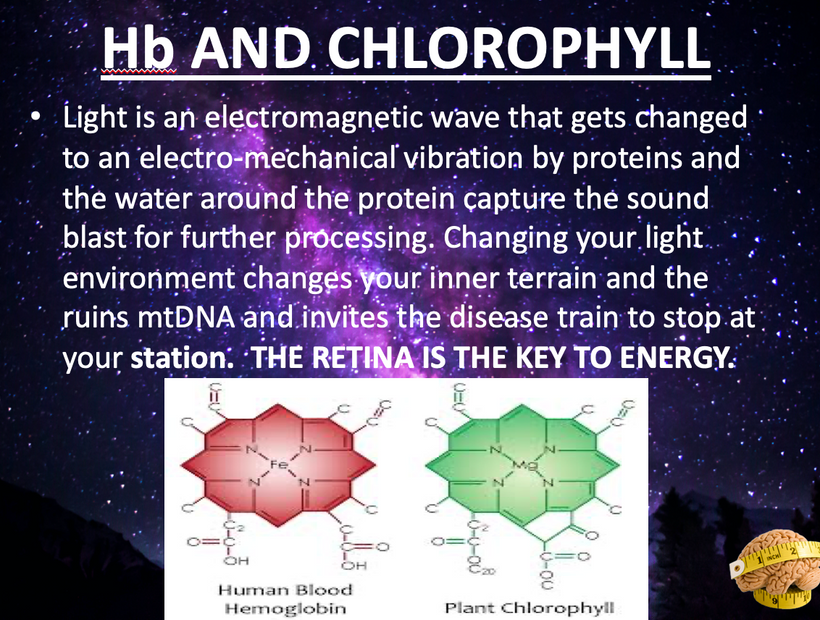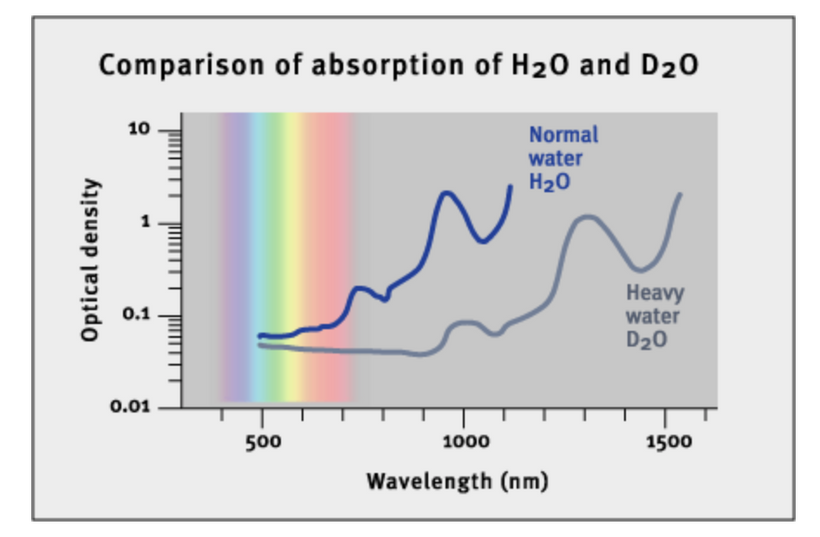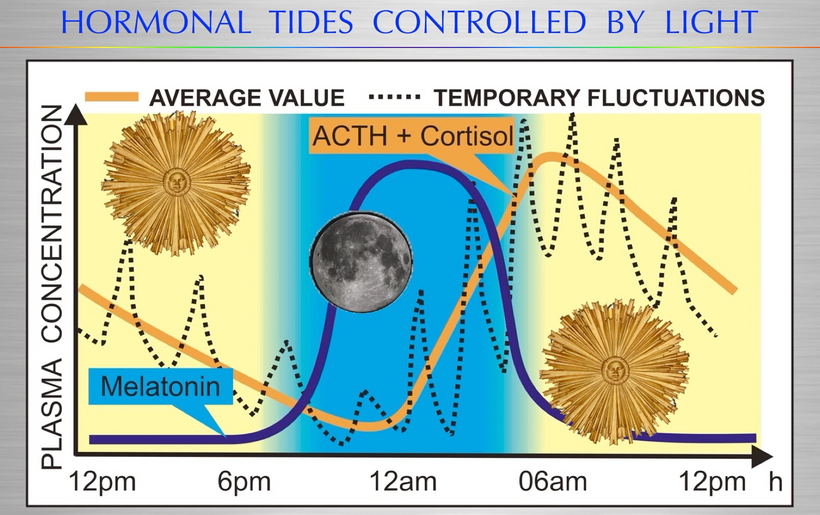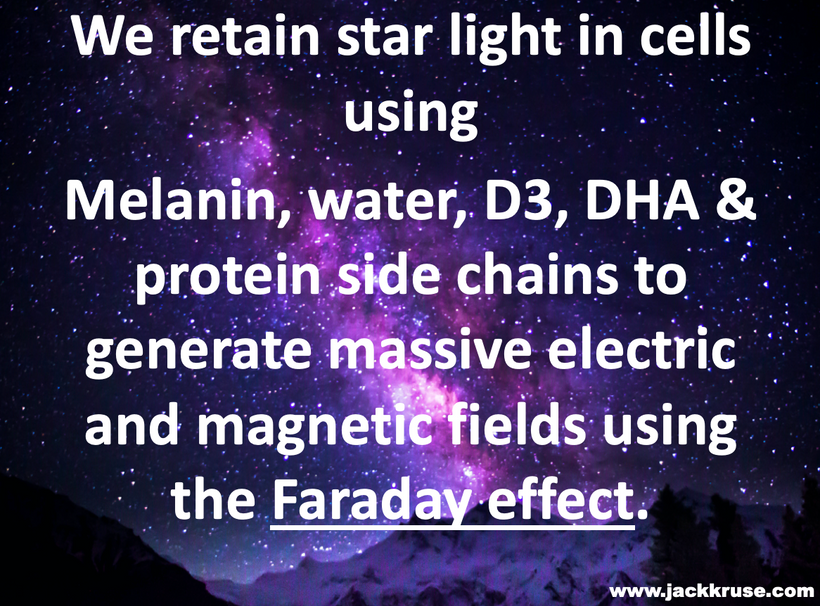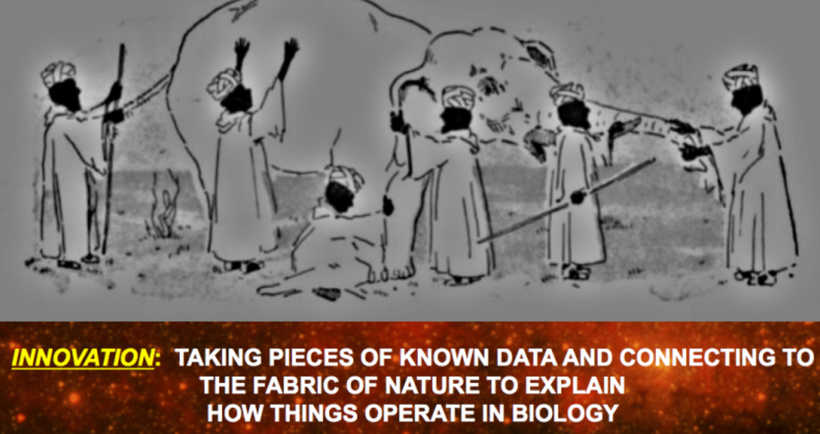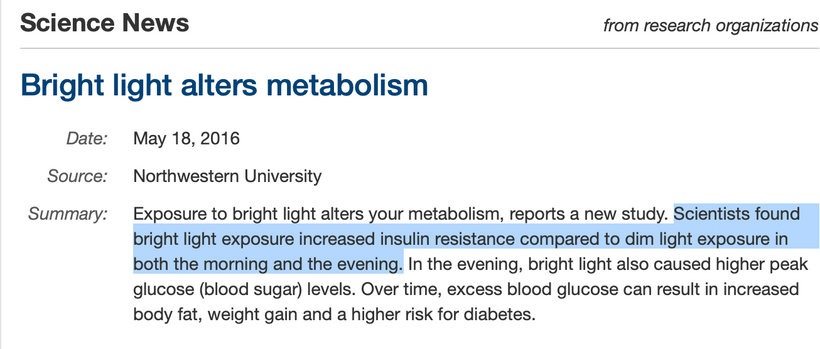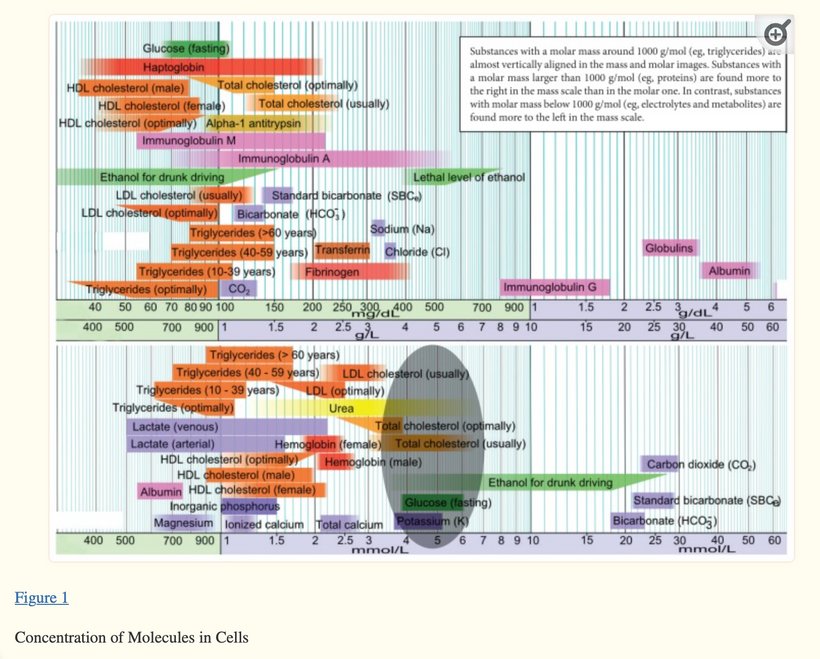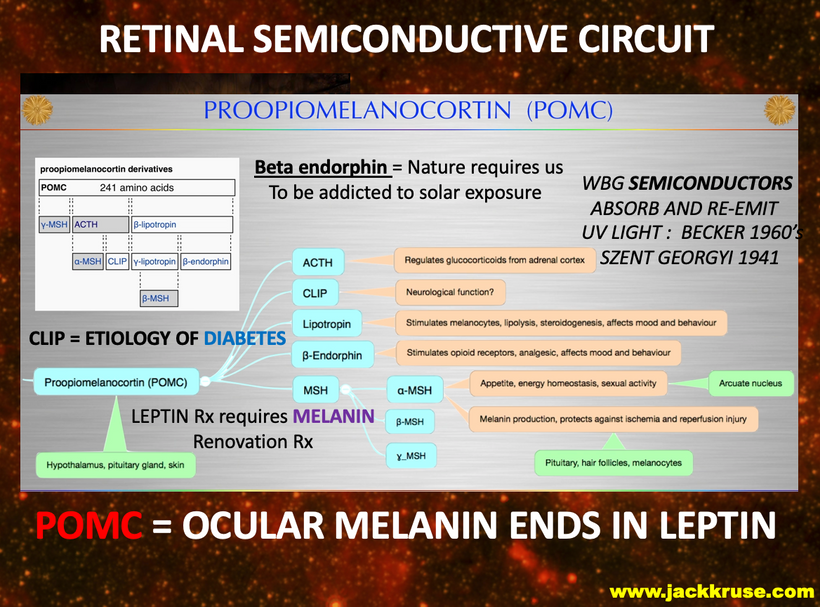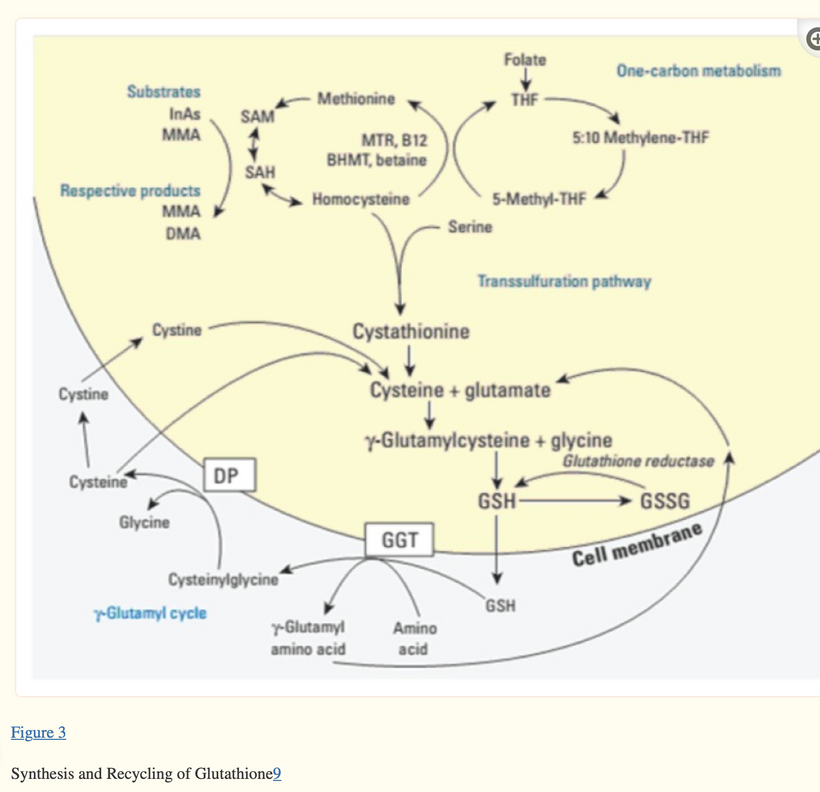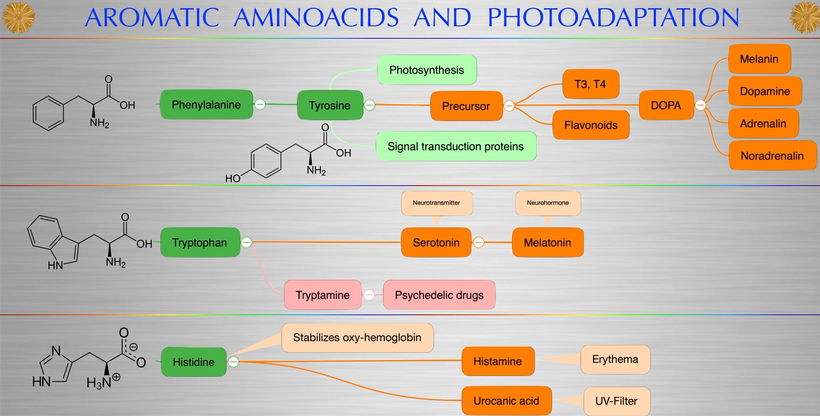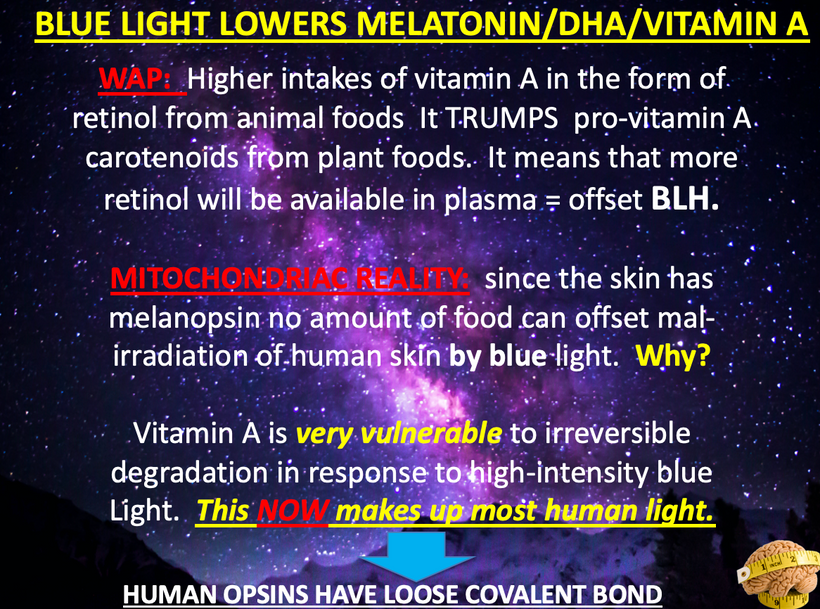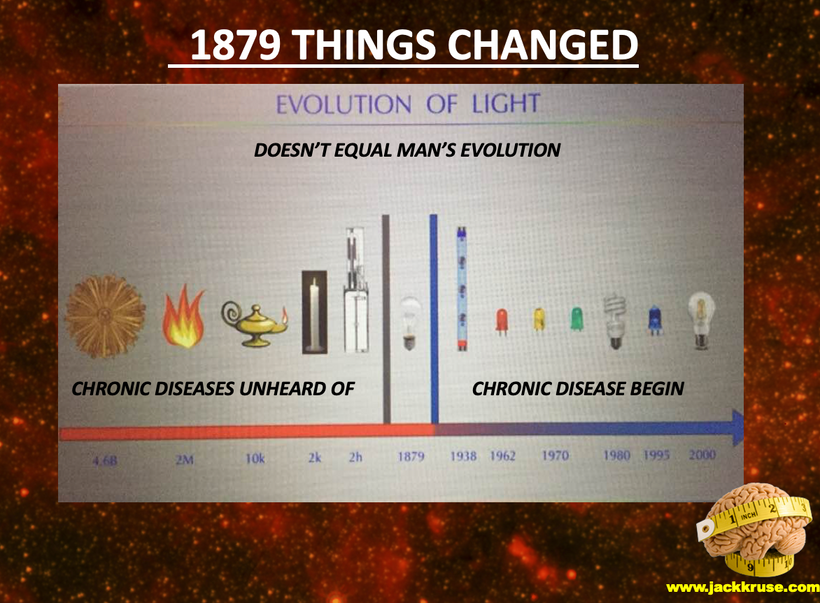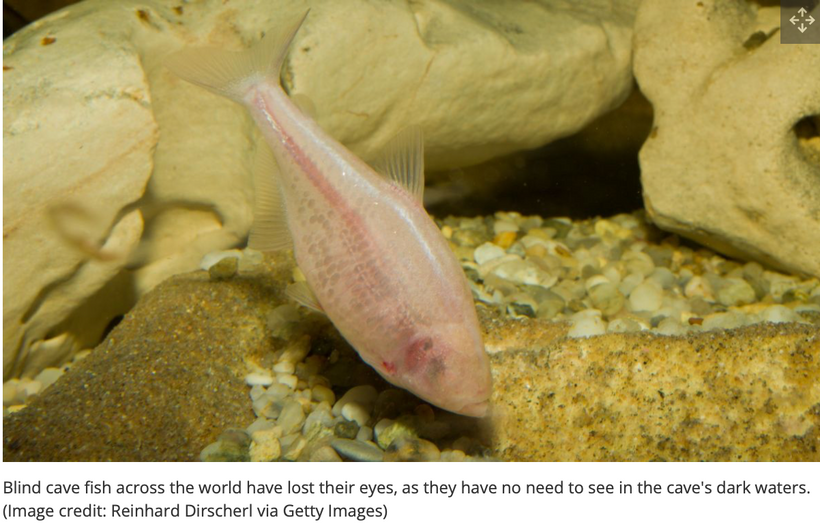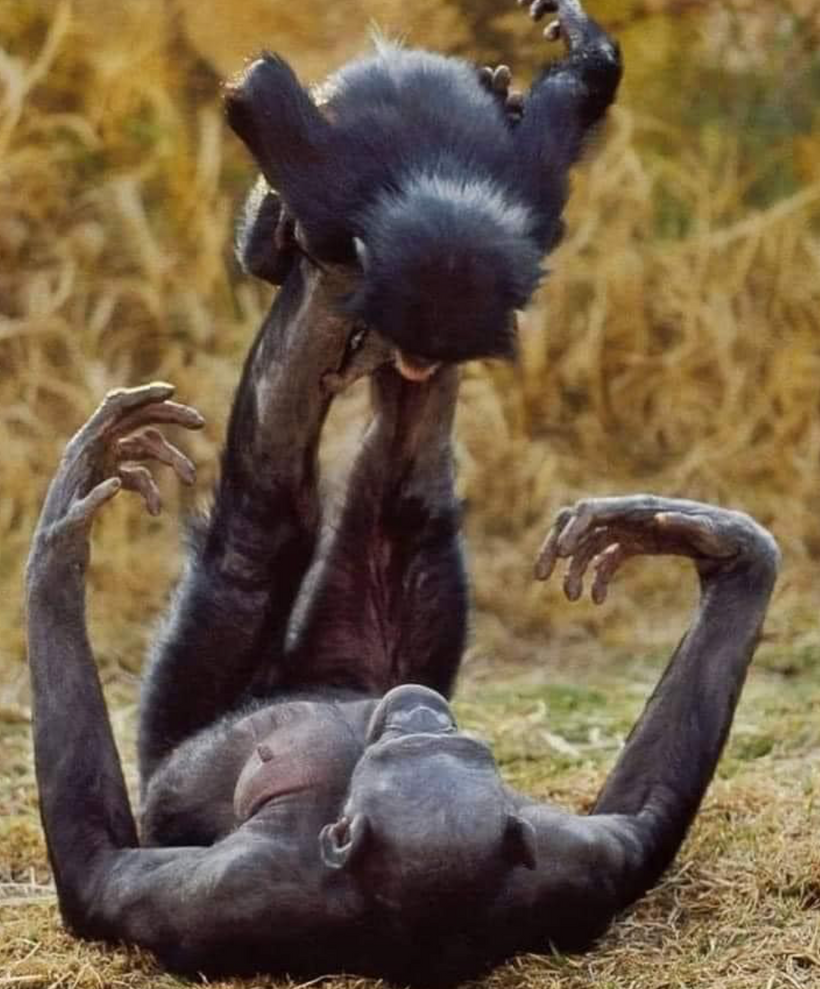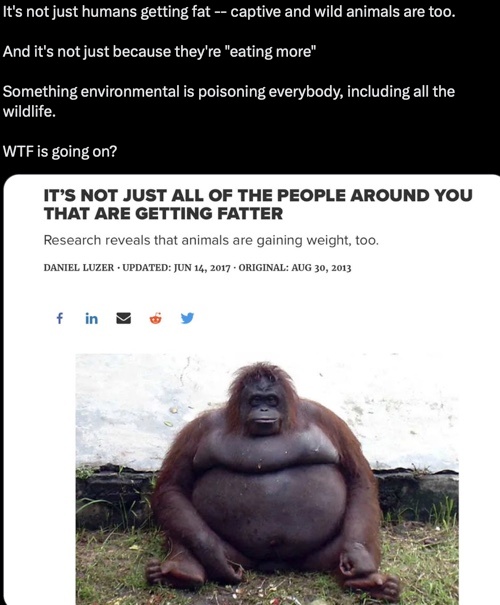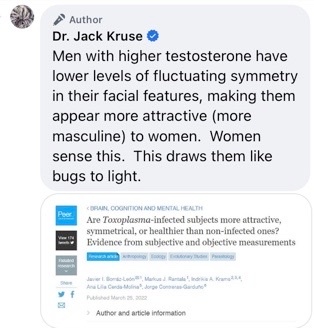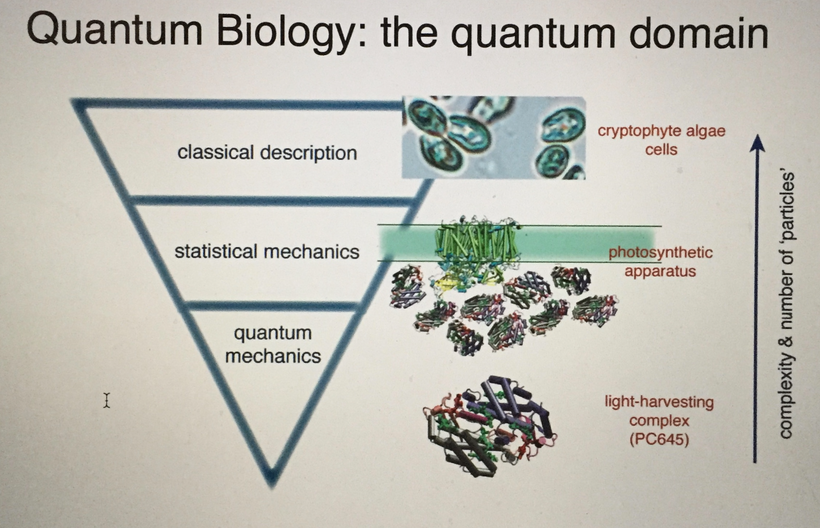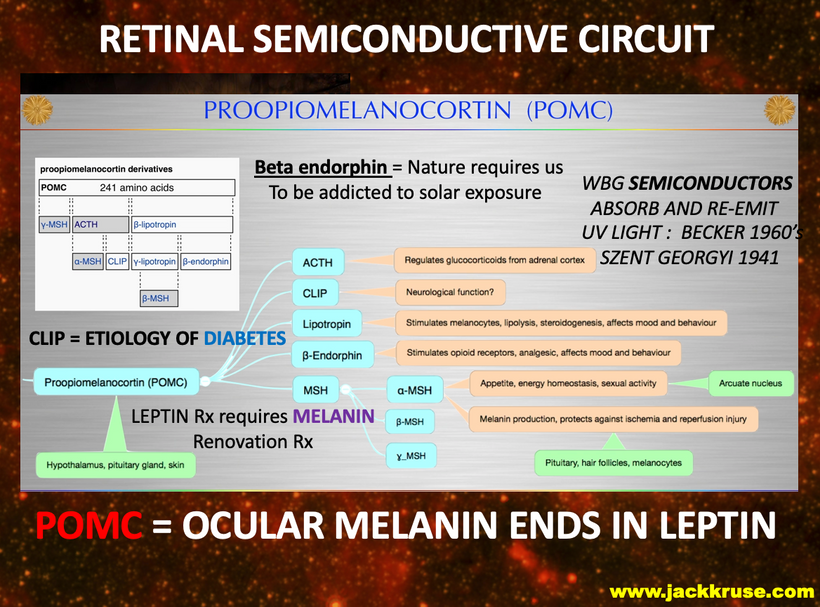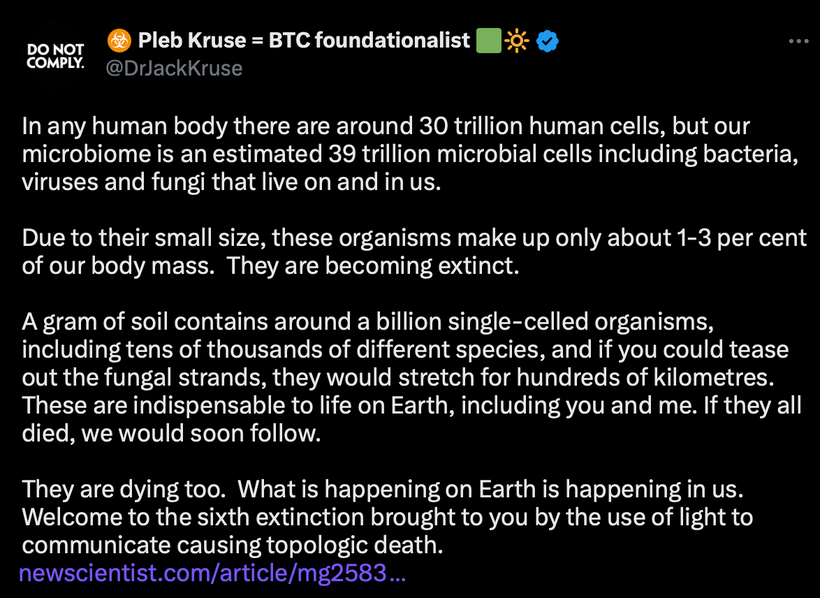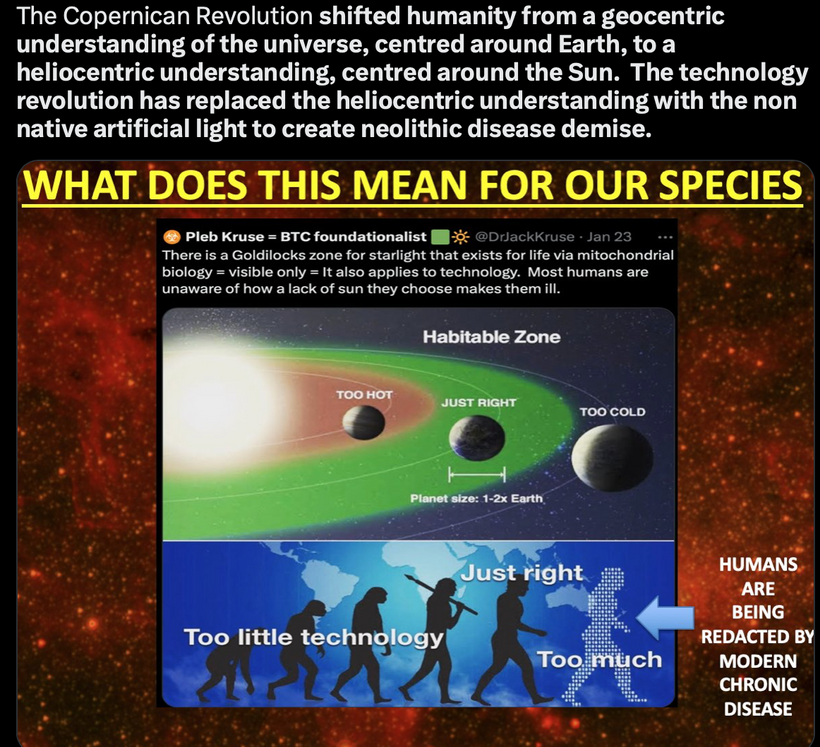
The first primate-like mammals, or proto-primates, evolved in the early Paleocene Epoch (65.5-55.8 million years ago) at the beginning of the Cenozoic Era. They were roughly similar to squirrels and tree shrews in size and appearance. The existing, very fragmentary fossil evidence (from Asia, Europe, North Africa, and especially Western North America) suggests that they were adapted to an arboreal way of life in warm, moist climates.
They probably were equipped with relatively good eyesight as well as hands and feet adapted for climbing in trees. These primate-like mammals (Plesiadapiformes) would remain rather shadowy creatures for us until more fossil data become available. These animals bodies were rapidly changed by POMC, specifically ACTH, and the appearance of flowering plants bearing fruit loaded with deuterium. This raised their blood sugar and insulin levels to stimulate the rapid sexual development we see today in humans called precocious puberty. This is why they changed so rapidly and why they radiated so quickly once the sun returned to Earth. Slowly over time, both parts of the POMC gene sculpted early mammals to become primates in the ten million years after KT.

The primate-like mammals do not seem to have played an important role in the general transformation of terrestrial animal life immediately following the massive KT global extinction of plants and animals that occurred about 65,500,000 years ago. The most dramatic changes were brought about by the emergence of grazing and browsing mammals with tough hoofs, grinding teeth, and digestive tracts specialized for the processing of grass, leaves, and other fibrous plant materials. The evolution of these herbivorous mammals provided the opportunity for the evolution of the carnivorous mammals that specialized to eat them. Sorry, PETA but Nature does not care about ideology. These new hunters and scavengers included the evolutionary lines that would later produce the dogs, cats, and bears of our time. Adaptive radiation was resulting in the rapid evolution of new species to fill expanding ecological niches, or food-getting opportunities. Most of these new animals were placental mammals and their interiors were being filled with melanin. With the exception of bats, none of them reached Australia and New Guinea. This explains why they did not exist there until people brought them in recent times. South America had also drifted away from Africa and was no longer connected to North America after 80,000,000 years ago. However, around 20,000,000 years ago, South America reconnected with North America and placental mammals streamed in for the first time, resulting in the extinction of most of the existing marsupials there.

The beginning of the Eocene Epoch (55.8-33.9 million years ago) coincides with the emergence of early forms of most of the placental mammal orders that are present today. In addition, placental mammals with larger bodies and bigger brains began to appear in the fossil record at this time. Paul Falkowski has suggested that this is due to the fact that the amount of oxygen in the earth’s atmosphere more or less doubled around 50 million years ago. Larger mammals have relatively fewer capillaries for the distribution of oxygen to the cells of their bodies. Subsequently, they must breathe air that is more oxygenated. Brains have especially high oxygen requirements. In addition, pregnant placental mammals must transmit a substantial portion of the oxygen in their blood to their fetuses. Coinciding with the increase in atmospheric oxygen at the beginning of the Eocene Epoch was a relatively abrupt global warming of 9-16 F. (5-9 C.) lasting at least 200,000 years. This also would have been a major factor in the rapid evolution of animals and plants at the time. Overall, climates were significantly warmer during the Eocene than now. There were crocodiles in the Arctic, pine forests in the Antarctic, and palm trees in Wyoming. There was no polar ice. As a consequence, sea levels were close to 330 feet higher than today. Sea rise is likely critical in the primate clade for future encephalization.
The first true primates evolved 55 million years ago or a bit earlier, near the beginning of the Eocene Epoch. Their fossils have been found in North America, Europe, and Asia. They looked different from the primates today. They were still somewhat squirrel-like in size and appearance, but apparently, they had grasping hands and feet that were increasingly more efficient in manipulating objects and climbing trees. The position of their eyes indicates that they were developing more effective stereoscopic vision as well.
Major evolutionary changes were beginning in some of the Eocene prosimians that foreshadow species yet to come. Their brains and eyes were becoming larger, while their snouts were getting smaller. At the base of a skull, there is a hole through which the spinal cord passes. This opening is the foramen magnum (literally the “large hole or opening” in Latin). The position of the foramen magnum is a strong indicator of the angle of the spinal column to the head and subsequently, whether the body is habitually horizontal (like a horse) or vertical (like a monkey). During the Eocene, the foramen magnum in some primate species was beginning to move from the back of the skull toward the center. This suggests that they were beginning to hold their bodies erect while hopping and sitting, like modern lemurs, galagos, and tarsiers. By the end of the Eocene Epoch, many of the prosimian species had become extinct. This may be connected with cooler temperatures which helped drive the evolution of wide-band gapped semiconductors in cells because they work better to create more VUV light to sculpt the mammalian body plan and the appearance of the first monkeys during the transition to the next geologic epoch, the Oligocene period happens about 34 million years ago.
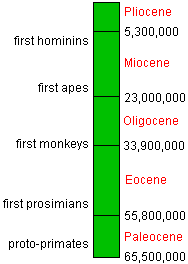
Early Monkeys and Apes
The body size of mammals in many species lines progressively increased after the end of the age of dinosaurs as they took advantage of the vast expanses of land and plant food made available by the extinction of the giant reptiles. The biggest land mammals ever to live evolved around 39-40 million years ago (near the end of the Eocene Epoch) and flourished during the subsequent Oligocene Epoch (33.9-23 million years ago). The largest of them was a hornless rhinoceros (Indricotherium transouralicum) living in Eurasia that weighed 16.5 tons (15,000 kg.) and stood 18 feet (5.5 m.) at the shoulders. By comparison, the biggest African elephants today weigh 6.7 tons (6,046 kg.) and stand 13 feet (4 m.) at the shoulders.
Unfortunately, the Oligocene Epoch was largely a gap in the primate fossil record in most parts of the world. This is especially true for prosimian fossils. Most of what we know about them came from the Fayum deposits in Western Egypt. While this area is a desert today, 36-31 million years ago it was a tropical rainforest on the edge of a large lake or sea. The marine chain was always close to these animals.
Monkeys evolved during the early Oligocene or possibly near the end of the Eocene. Their ancestors were most likely prosimians. These monkeys were the first species of our infra order–the Anthropoidea. Several genera of early monkeys have been identified. Apidium and Aegyptopithecus are the most well-known. The former was about the size of a fat squirrel (2-3 pounds or .9-1.4 kg.), while the latter was the size of a small dog (13-20 pounds or 5.9-9.1 kg.). Compared to the prosimians, they had fewer teeth, less fox-like snouts, larger brains, and increasingly more forward-looking eyes. These and other anatomical features suggest that the early monkeys were becoming mostly diurnal fruit and seed-eating forest tree-dwellers.

New World monkeys appeared for the first time about 30 million years ago. It is generally thought that they began as isolated groups of Old World monkeys that somehow drifted to South America either from North America or Africa on large clumps of vegetation and soil. The evidence suggests that Africa is the most likely continent of origin. Such “floating islands” produced as a result of powerful storms tearing at the land still occur in tropical regions of the world today. It is likely that other kinds of small animals were transported to South America in this way as well.
Due to the comparative scarcity of Oligocene Epoch prosimians in the fossil record, it is generally believed that the monkeys out-competed and replaced them in most environments at that time. Supporting this hypothesis is the fact that modern prosimians either live in locations where monkeys and apes are absent or they are normally active only at nighttime when most of the larger, more intelligent primates are sleeping.
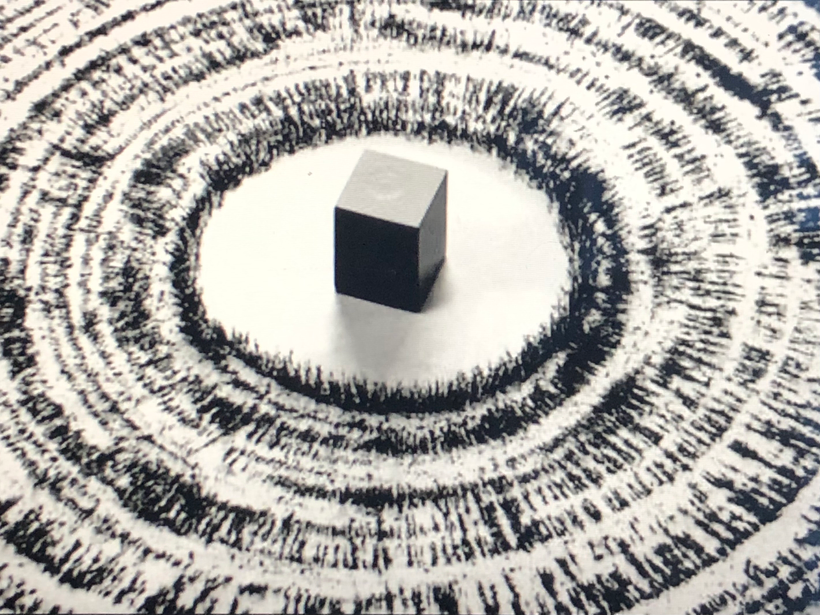
The Oligocene was an epoch of major geological change with resulting regional climate shifts that likely affected the direction of evolution and altered fossil preservation conditions. By the beginning of the Oligocene, North America, and Europe drifted apart and became distinct continents. The Great Rift Valley system of East Africa also was formed during the Oligocene along a 1200-mile-long volcanically active fault zone between tectonic plates that are moving away from each other. We believe this is the cradle of man.
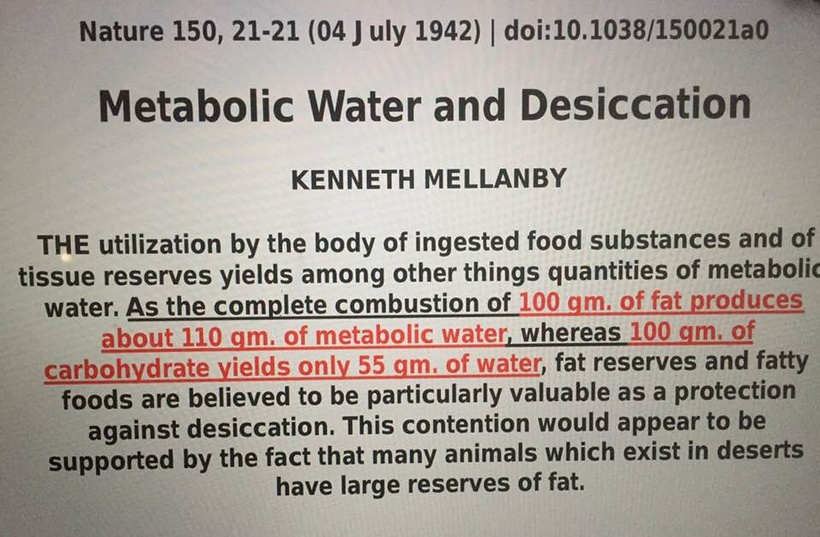
^^^^AVAGADRO’S NUMBER ON DISPLAY IN METABOLIC WATER
This created an easy north-south regional migration route for animals. Around 120 million years ago, the tectonic plate that forms the Indian subcontinent began to rapidly drift north across the Indian Ocean from Antarctica. By 50.5 million years ago, India began crashing into Asia at a rate of 10-12 inches (25-30 cm.) a year and continues to do so today forming the Sahara desert. The crashing of India turned a rainforest and ocean in Africa into a desert. This has progressively forced up the Himalayan chain of mountains and the high Tibetan Plateau beyond. During the Oligocene, the continuing growth of this immense barrier altered continental weather patterns significantly by redirecting the summer monsoonal rains to the east. This created a vast arid rain shadow region in Central Asia and very likely triggered global climate changes. The cooling and drying trend with the associated expansion of grasslands that had begun in the late Eocene Epoch accelerated, especially in the northern hemisphere. A result was the general disappearance of primates from these northern areas. However, climates in most regions were still warmer than today.
By 16-14 million years ago, in the middle of the Miocene Epoch (23-5.3 million years ago), the ongoing movement of tectonic plates in the Great Rift Valley system created new volcanic mountain chains in east Central Africa. These in turn altered local weather patterns. Some areas became wetter while others more arid due to local rain shadows. In addition, the progressive global cooling trend continued. Growing polar ice caps reduced the amount of water in the oceans, causing sea levels to drop. This exposed previously submerged coastal lands. As a result of this and continental drift, a land connection was reestablished between Africa and Eurasia along the eastern Mediterranean Sea coast that provided a migration route for primates and other animals between these continents. Much of the East African and South Asian tropical forests began to be replaced by sparse woodlands and dry grasslands because of climate changes. As a result, there were new selective pressures affecting primate evolution.
Primate fossils are common from the Miocene. However, not all primates are equally represented in the fossil record. Apes apparently evolved from monkeys early in this epoch. Fossil monkeys and prosimians are comparatively rare from most of the Miocene, but apes are common. It appears that apes at that time occupied some ecological niches that would later be filled by monkeys. One of the earliest of the monkey-to-ape transitional primates was Proconsul. It lived in African forests 21-14 million years ago.
Among the numerous Miocene primate species were the ancestors of all modern apes and humans. By 14 million years ago, the group of apes that included our ancestors were apparently in the process of adapting to life on the edges of the expanding savannas in Southern Europe. They were very likely members of the genus Dryopithecus, which were generally similar in appearance to modern African apes. These apes evolved mostly during a relatively short global heat wave that began around 15 million years ago. This caused enough polar ice to melt so that sea levels once again rose 80-130 feet.
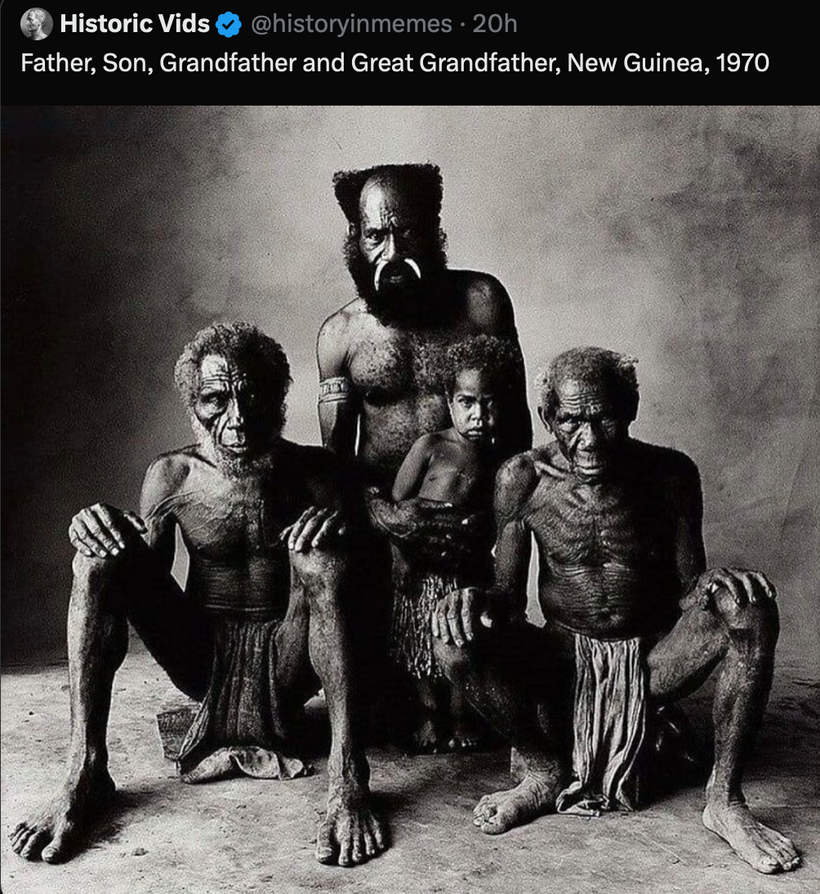
Toward the end of the Miocene, less hospitable cooler conditions in the northern hemisphere once again caused many primate species to become extinct while some survived by migrating south into Africa and South Asia where it remained relatively warm. About 8-9 million years ago, the descendants of the dryopithecines. in Africa diverged into two lines–one that led to gorillas and another to humans, chimpanzees, and bonobos. Around 7 million years ago, a further divergence occurred which separated the ancestors of modern chimpanzees and bonobos from the early hominins (human-like primates) that were our direct ancestors.
Who Are We, Really?
The more clearly we can focus our attention on the wonders and realities of the universe about us the less taste we shall have for the destruction of our species. Wonder and humility are wholesome emotions, and they do not exist side by side with a lust for destruction. Where we invest our time and attention is MORE important than how we invest our money. Time is the most valuable asset most waste. Do things in life, be clenched, and curious. Do not wait for inspiration’s shove or society’s kiss on your forehead. Pay attention. In fact, pay deep attention. It’s all about paying attention. Attention is vital to your humanity. It connects you with others. It makes you eager, to learn and be curious.

If you are a paleoanthropologist or archeologist you think fossils are the Rosetta Stone for discovering the path that human evolution took. If you are a proteomic evolutionary biochemist you think molecular arrays are the best way to decipher the tea leaves of Mother Nature ways. If you are a geneticist you think RNA/DNA is the Holy Grail of human evolution. If you are a dental specialist, like University of Arkansas professor, Dr. Peter Ungar you think it’s all about the mammalian teeth.
Today’s bro scientists on the internet like to define evolutionary thinking by thinking about the Paleolithic epoch and how it might have shaped the hominid tree. The Paleolithic shaped the tree to be sure, but had nothing to do with planting the acorn. What we came from was alien to who we are now.
Our complexity came from a binary code that became more able to bend and expand the neural tube of primates. Bringing melanin into our interiors was the key to creating those bends and encephalizing primates.
We are silly talking monkeys whose body plan was sculpted by light captured by melanin that charge separated water to augment the power plant buried in biochemistry and mitochondria.

Clock genes were used to coordinate all zip codes inside the Jacquard cards of biochemistry to measure the overall flow of energy to extract information about where the Earth is in relation to the sun. The sun created the most powerful protein in Earth’s history because it can harvest the power of the entire electromagnetic spectrum. Water was the plasma for most of Earth’s history, but nature created melanin to work with water something unique occurred. The binary code of life that builds order from chaos begins by deciphering the code that exists between H+ and deuterium separated from water and plugged into ancient biochemical pathways to sculpt something new.
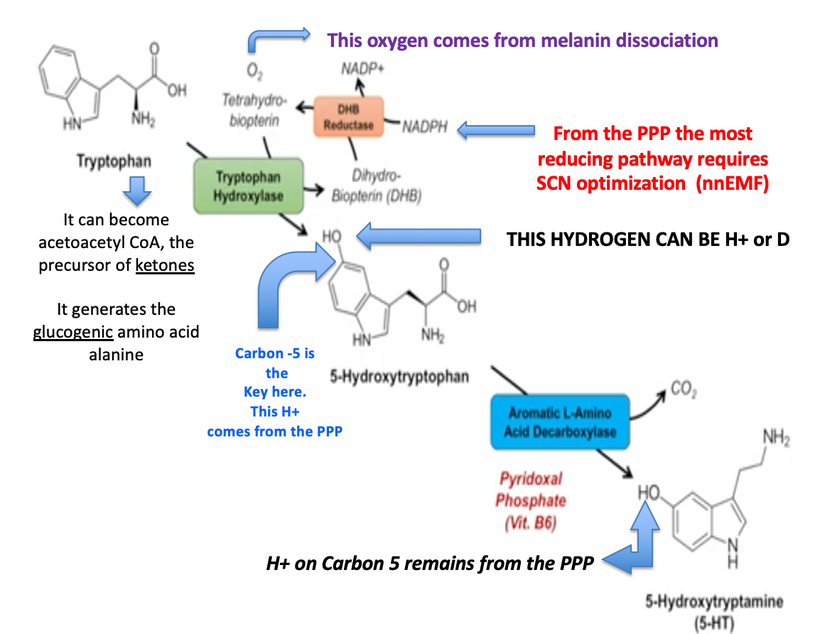
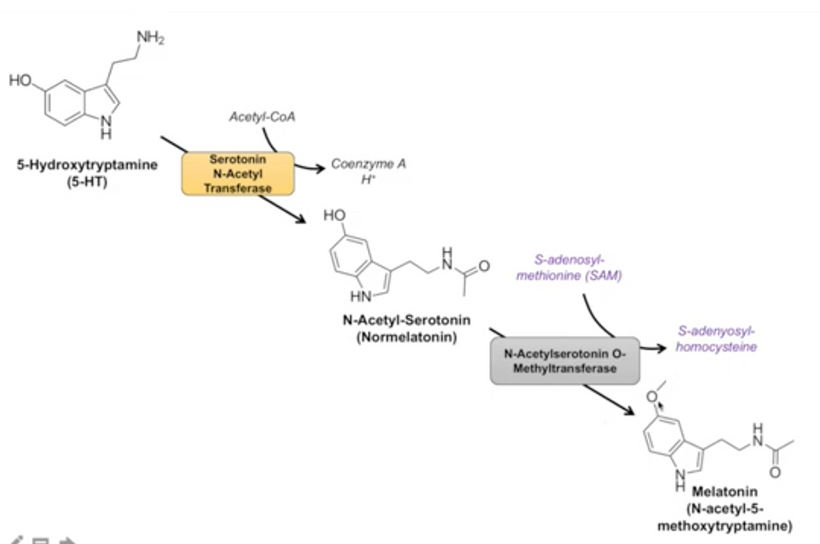
Metabolic pathways called the PPP and TCA cycle control the fractionation of hydrogen isotopes in mammals, and as such, determine morphogenesis in the neural tube because it places with precision where the isotopes have to be located to create the bends needed in the notochord to build a human brain from a primate’s brain.
Metabolism is 100% controlled by the SCN optical lattice clock in your eye. Melatonin acts here. Without that precision, there would be an improper mix of lipids at the lipid rafts that control the morphogenetic plan of humans. That precision of lipid (DHA/cholesterol) content allowed for maximum absorption of sunlight to create an electric current that could control deuterium with its large magnetic moment.
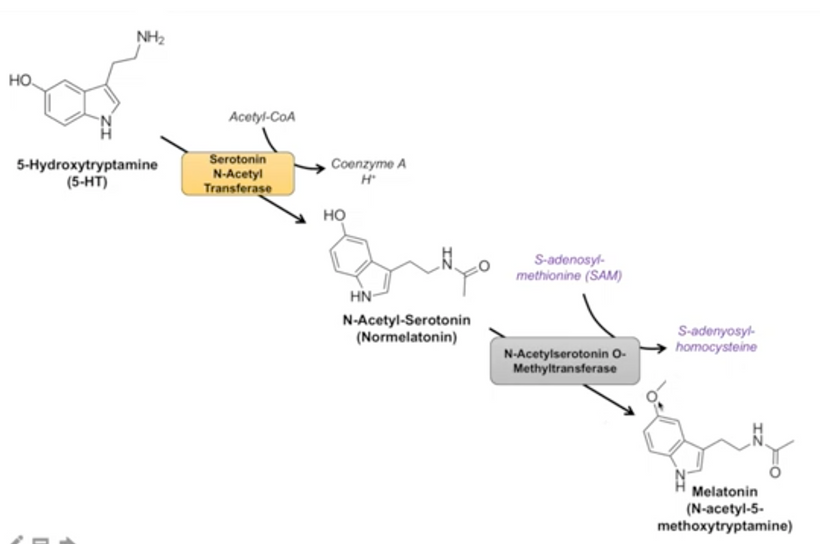

Melatonin controls the 2 change programs in mitochondria and mitochondrial create melatonin and water. In the above 4 slides, you see how hydrogen is being moved in these boxcars. Changing the isotope of hydrogen changes everything in the mammal body and brain plan. This is how primates changed.
Melatonin is made from a time crystal that controls the timing mechanism in all zip codes of the cells as it changes. This means when hydrogen or deuterium is added to its back it changes its timing mechanism. This leads to more bending of the neural plate in locations it occurs in the brain.
Cells of the mammalian grow and divide at different rates because of the amount of deuterium and hydrogen in them. This created NEW neural folds that allowed for a new plan to develop from the primate brain. These quantum processes are regulated by a complex interplay between the underlying notochord and overlying ectoderm, by putting hydrogen isotopes in specific places on signaling molecules used in brain growth. These semiconductive proteins are called Sonic Hedgehog (Shh), bone morphogenic protein-2 (BMP2), and noggin. They operate via the Jacquard card of the Wnt signaling pathway that has been used in life all the way bad to the first form of life on Earth. The differential growth of the neurons between those bends is wholly linked to deuterium content as its different magnetic moment interacts with electric currents from the lipid rafts in the embryo to cause the issue. The sun is the source of that information current.

The seasonal light stress that primates faced was sensed by the non-visual photoreceptive proteins and POMC. This non-visual system was designed by Nature to allow mammals to alter the fat content in their lipid rafts to better handle UV light. This is why cholesterol also has an absorption spectra of 220nm light. Most do not know this. When UV light returns to the mammalian environment membranes sense the change non-visually and this information is sent to their colony of mitochondria where a redox shift occurred involving mTOR.
380 nm UV light captured by neuropsin sends an anabolic electrical signal onward in mammal embryos. This was connected to 290-320nm light captured by cholesterol to create Vitamin D. Cholesterol and neuropsin are non-visual photoreceptors. Cholesterol and Vitamin D3 are nearly identical in chemical structure. Full-spectrum sunlight naturally sulfates both of these photoreceptors. The only difference in both bio-molecules is a single double bond in the second ring of the cholesterol backbone. This gives Vitamin D3 one less hydrogen atom than the closed ring of cholesterol. Hydrogen is the chameleon sculptor.
Sulfation makes chemicals more water-soluble. Now we can see why water pathways in the brain became so important in humans and the way their brains were used.
This electrical information from the non-visual system acted like Morse code to the hypothalamus in the embryos of primates which were gaining more melanocytes as primates lost their hair. That internalization of melanin created more POMC neurons inside the skull which created more beta lipotropin peptide from POMC cleavage. This created more HDL cholesterol in the skin of these transitioning primates. Sunlight also sulfates this HDL version of cholesterol Why? Sulfated HDL cholesterol has more electron density at its electronic level and this makes it another ideal nonvisual skin photoreceptor. It also changes how the other non-visual photoreceptor in the skin which is more famous operates. That is the vitamin D machinery in the skin. Vitamin D is linked up to the non-visual photoreceptor system Vitamin, namely Vitamin A at the RXR receptor.
This signal is also picked up in the eye at the RPE of the retina. This information was sent to the hypothalamus to also assist in the mammals changing the surfaces and bending of the notochord. This was all done by fractionation of the isotopic mix of hydrogen which affected the translation of the POMC gene. The bending of the notochord in primates lead to movements of the foramen magnum of primates from the immediate back of the head to the center of the head to help bipedalism. In favt bipedalism was the first thing to change in humans from chimps.
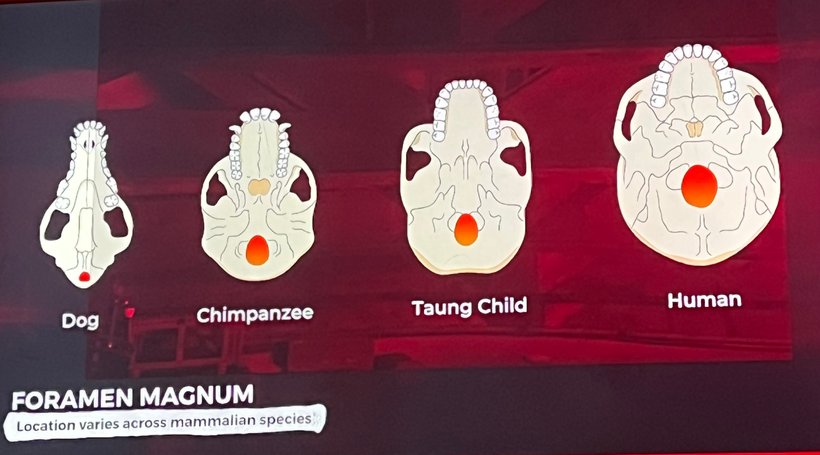
At term, the human fetus has about 13 % of body weight as fat, a key form of energy insurance supporting brain development that is not found in other primates. The location of neonatal fat is mostly subcutaneous while the brain is still underdeveloped. What does fat become in human metabolism? CO2 and metabolic water. That water is the fuel source to build our brains. As we lost hair we expanded the eccrine sweat glands on our skin to eliminate deuterium from sweating and this also cooled our surfaces to allow melanin’s ability to charge separate water to become more efficient.
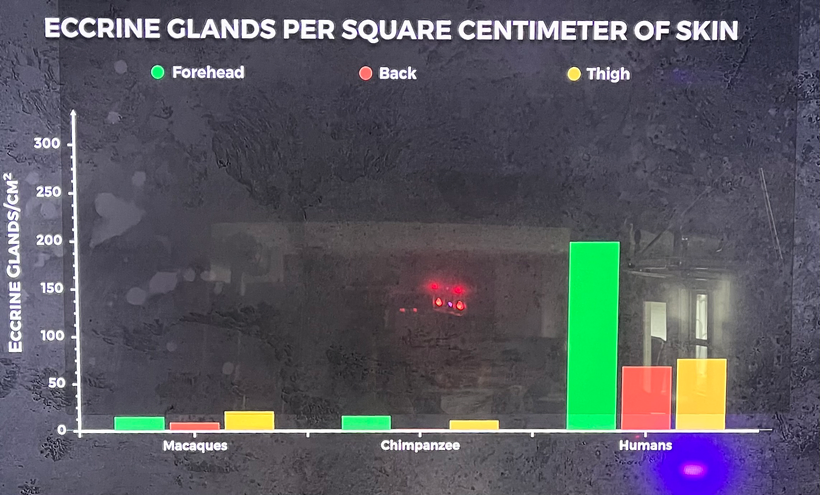
A human child at birth cannot walk or talk. This makes them unique in the primate tree. They also lost most of their hair exposing their skin to the sun. Most of their melanin was imported to their interiors while their brains developed. As the brain matured, the child lost much of its subcutaneous fat. It almost seems that the survival of the fattest (primate infant) was the key to human brain evolution. It should be no surprise that the leptin-melanocortin pathway controls that biology by way of POMC.
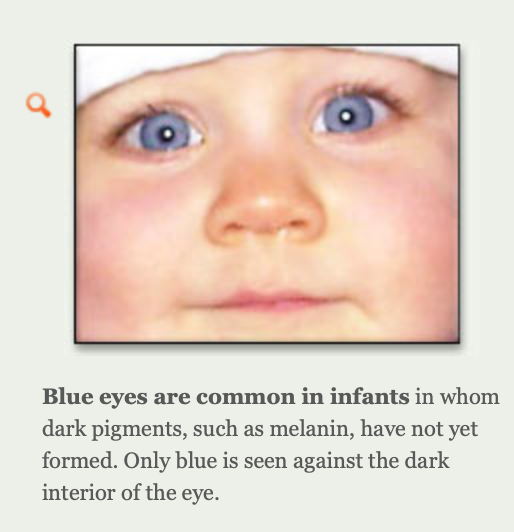
The proopiomelanocortin (POMC) gene was most likely derived from an ancestral opioid-coding gene following the 1R chordate genome duplication event. During the radiation of the jawless fish, the POMC organization plan emerged multiple melanocortin sequences (α-MSH/ACTH and β-MSH) and a C-terminally extended opioid sequence (β-endorphin).
Following the 2R genome duplication event, the γ-MSH sequence was gained. Among the jawed vertebrates, three distinct trends in the evolution of the POMC gene are apparent: the gain of the δ-MSH sequence (cartilaginous fish), the loss of the γ-MSH sequence (ray-finned fish), and the retention of the post 2R POMC organization plan (lobe-finned fish/tetrapods). POMC is synthesized in the pituitary gland and in neurons of the hypothalamus, where an array of posttranslational processing mechanisms, such as endoproteolytic cleavage and N-acetylation, generate distinct sets of end-products in these tissues.
The most striking feature of the melanocortin end-products is the rigorous conservation of the primary sequence of α-MSH and the first 25 amino acids of ACTH throughout the family of mammals. That stronghold has lasted for the entire evolutionary history of mammals on Earth.
Does Nature make mistakes?

Melanin, our wide-band semiconductor made from alpha MSH, and ACTH sculpted our morphologic and physiological change without any major changes to our genomes. They used the binary code of hydrogen and deuterium with sunlight to do the job. That story was covered in my first Kruse for Dummies lecture.

The binary code of life is the isotopic variation of hydrogen and deuterium parsed through the human Jacquard loom. That loom was the POMC gene of mammals. The result of the code interacting with the loom was a gorgeous wide band gapped semiconductor that sculpted the subatomic world inside of cells to create the most intricate fabric the universe has to date. Humans.
https://twitter.com/DrJackKruse/status/1659238658933653515
“The task is … not so much to see what no one has yet seen; but to think what nobody has yet thought, about that which everybody sees.”
― Erwin Schrodinger
CITES
https://doi.org/10.1073/pnas.2209139119
Huang PL. Nitric oxide and cerebral ischemic preconditioning. Cell Calcium. 2004;36(3–4):323–329.
https://onlinelibrary.wiley.com/doi/full/10.1111/j.1600-079X.2004.00181.x

